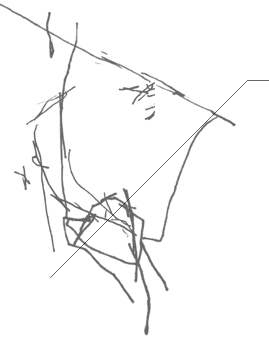Monday, November 24, 2025 |
||

|

by Michael Goldberg
Monday August 20, 2001
Maria Muldaur's Perfect Moment
Long, long ago, a collaboration of producers, musicians and
a singer made an album that reinvented the past.
|
|||
|
When punk arrived out of New York in the mid-'70s, it spat in the
face of what had come just before it: '70s dinosaur rock,
navel-gazing singer/songwriters, chart-topping country-rockers and
hippie troubadours. If you bought into the raw snarl of Richard Hell
and the Voidoids, Patti Smith and Television, or the less abrasive
sounds of Mink DeVille, Blondie or Talking Heads, the conventional
wisdom was that that rock had become a wasteland populated by
corporate rock bands and wimps. (Maybe there were a few exceptions,
such as Bruce Springsteen and the E Street Band, or the Blue
Öyster Cult.)
It's amazing the different perspective you get from the passage of time. I thought of this the other day as I read about the Ghost World soundtrack. Collecting many obscure or lost blues recordings and some other very old oldies, the album benefits from the hip cachet of the hipster movie of the year (as well as of the original "Ghost World" comic by Daniel Clowes). The movie may just send a lot of folks in their late teens and early 20s to the record stores in search of music that passed out of fashion decades before they were born. The soundtrack to "O Brother, Where Art Thou?" is still reminding us that long before Nashville started cranking out crap by Garth Brooks and other mall-cowboys, country music had some teeth. Good music is good music. The passing of time doesn't change that. Fashion, on the other hand, changes, and music is like fashion in that its audience is fickle. Periodically people just want a change. After the mod and psychedelic explosions of the '60s, artists such as Bob Dylan, the Byrds and the Grateful Dead turned in the '70s to the older sounds of country and folk music. They produced such albums as John Wesley Harding, Sweetheart of the Rodeo and American Beauty. Jerry Garcia even played in a country band called Old and in the Way. Perhaps not so surprisingly, members of the L.A. punk band X formed a country/folk outfit called the Knitters in the '80s. Peter Case of the Plimsouls now plays blues and folk songs, and the No Depression alterna-country movement included Uncle Tupelo, the Jayhawks and Whiskeytown. The more traditional musical forms exert a strong and inevitable pull. The other day I bought a CD I'd first bought as a vinyl album when it was released in 1974 — just a year before the arrival of New York punk. That album, Maria Muldaur, is an exquisite work, and I bet both mid-'70s fans of Patti Smith and "Ghost World" fans of right now would find it hard to resist. In the late '60s and early '70s Maria Muldaur was the singer in the Jim Kweskin Jug Band, who revived music that already seemed relegated to the history books. As young musicians playing old-time music, they attempted to copy the sounds of past artists they admired. Maria Muldaur is different. Co-produced by Lenny Waronker (Randy Newman, Ry Cooder) and Joe Boyd (Richard and Linda Thompson), it was a stylized take on the past — old-time American music as the producers imagined it. The past, on the album, appears as a wonderful place, somewhat exotic yet comfortable, and a welcome retreat from contemporary reality careering out of control (post-Manson, post-Vietnam, post-hippie counterculture, post-Woodstock). If the punk response to an awful present was to push into the future, another response was to reinvent the past. Muldaur's recording of David Nichtern's "Midnight at the Oasis," which appears on the album, was a pop hit at the end of 1973. It made Muldaur a star, and college kids and hipsters alike loved the album. Maria Muldaur is a producer's album, the auteur theory of film applied to an album. Waronker and Boyd chose the songs. A few oldies such as Jimmie Rodgers' "Any Old Time," which opens the album and sets the mood, were mixed in with old-sounding material by contemporary writers: Wendy Waldman's "Vaudeville Man" and "Mad Mad Me" ; Dan Hicks' "Walkin' One and Only"; Dr. John's "Three Dollar Bill" and Kate McGarrigle's "The Work Song." The producers used a who's who of session musicians, many already living legends. Drummer Jim Gorgon and Jim Keltner, guitarists Ry Cooder, David Lindley and Clarence White, bassists Chris Ethridge and Klaus Voorman, keyboardists Jim Dickinson, Spooner Oldham and Dr. John. David Grisman played mandolin on Muldaur's version of Dolly Parton's "My Tennessee Mountain Home"; violinist Richard Greene played on that song and on "Walkin' One and Only." The result is, to my ears, a timeless classic that sounds natural and uncontrived. It matters not that, like a Hollywood set for a Western, Maria Muldaur isn't authentic. As Neumu's Philip Sherburne wrote me in an email the other day, "Popular music is all about artifice, and some of the most skillful musicians use that to their advantage (from Outkast to Gillian Welch, paradoxically enough)." With the charts still dominated by the likes of 'N Sync and Staind, I'm not at all surprised that we're seeing a flourishing punk/indie underground. I'm not surprised by the even more widespread popularity of the "O Brother, Where Art Thou?" soundtrack. I won't be surprised if the "Ghost World" soundtrack sells as well. We yearn for that which is "real," and even if the country roots of some folk who make this old-time music aren't "real," the sentiments and the soul that come through are. |
||||